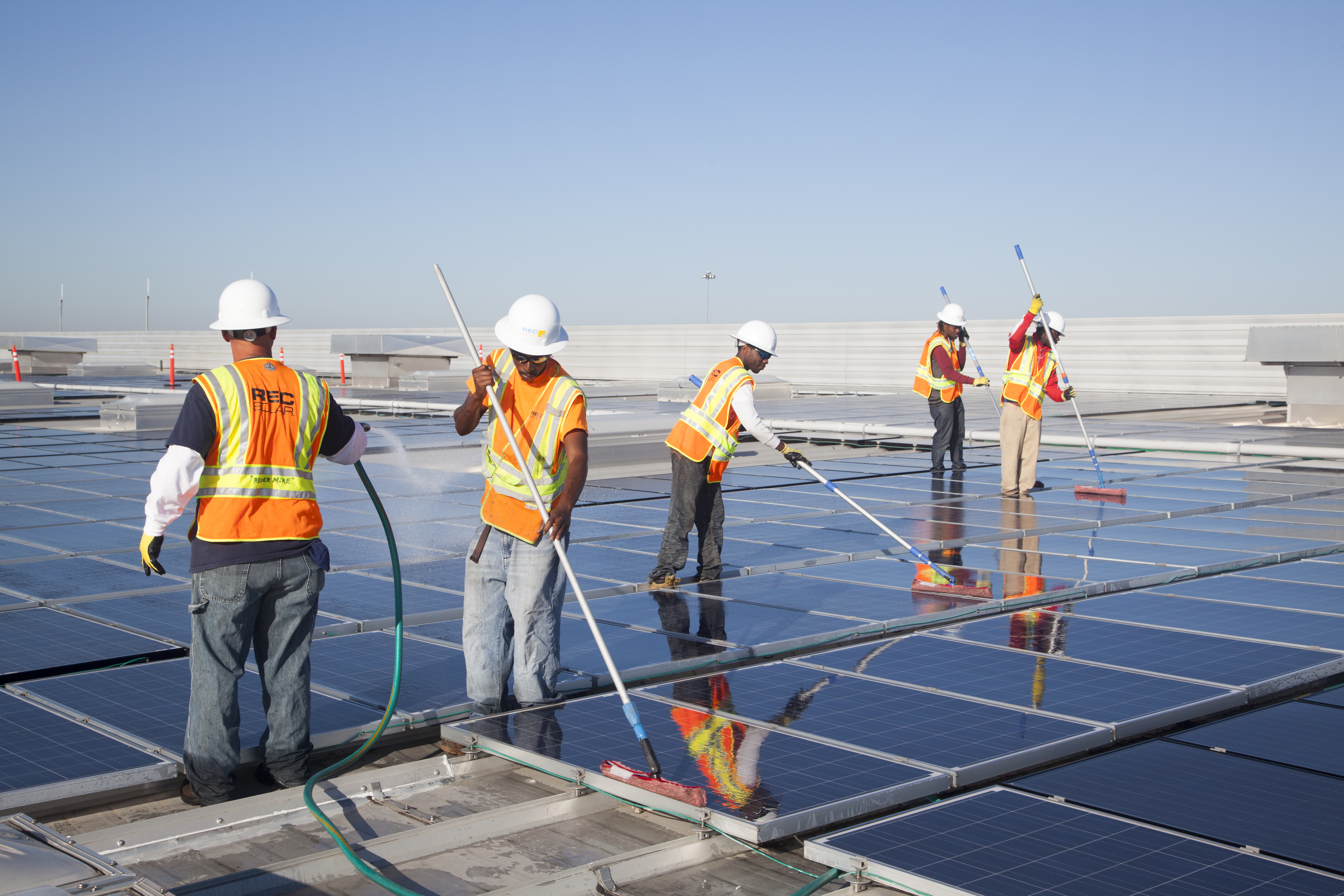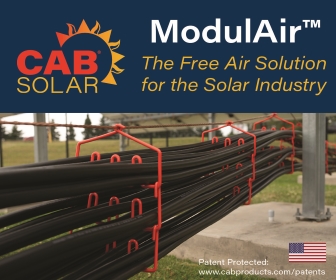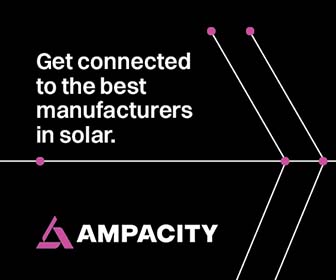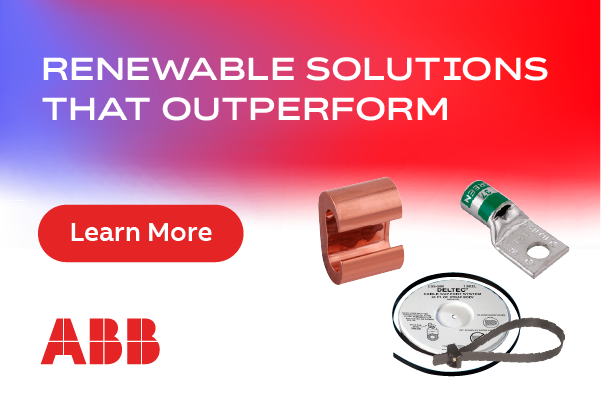Quality O&M Services Maximize Commercial Solar ROI
 The prodigious growth of solar power in the United States has turned what was once a boutique industry into a multibillion-dollar asset class. Cumulative installed solar photovoltaic (PV) capacity in the US has exceeded 20 gigawatts (GW), with thousands of projects scattered across the country.
The prodigious growth of solar power in the United States has turned what was once a boutique industry into a multibillion-dollar asset class. Cumulative installed solar photovoltaic (PV) capacity in the US has exceeded 20 gigawatts (GW), with thousands of projects scattered across the country.
With gigawatts now in play, this burgeoning stable of solar asset investments needs to be properly operated, maintained, and managed. Commercial solar system owners, building hosts, and other stakeholders require professional operations and maintenance (O&M) services for each solar project to realize its full value potential. PV systems without scheduled maintenance programs to support the product and power production do not typically provide the best ROI for the customer.
From a cost-center to value-add
Until recently, the prevailing view of commercial solar O&M focused mostly on the more janitorial and repair sides of the service: keeping the vegetation trimmed, cleaning modules, replacing faulty inverters, and monitoring the performance of the PV array. O&M has been seen by some developers and EPC firms as an annoying cost center or “necessary evil,” one that could be downplayed (and under-budgeted) to make a project pencil out in the face of constant downward cost pressures. This compunction to cut construction—and services—costs to enhance short-term profits can have a negative impact on the longer-term operational health of the system.
The largest hidden cost to under-appreciating O&M is failed power production expectations. Customers plan, forecast, and budget based on the expected power estimated during design and construction. A PV developer’s future financing can be seriously affected by an underperforming project. Expensive material repair costs and additional resources to manage and repair the asset can add up quickly. Damage to the builder’s and the solar industry’s reputation to provide a cost-efficient energy alternative is also very costly.
A growing number of investors, EPCs, and asset owners now realize O&M and related services require a more holistic, value-oriented approach, one that is baked into the system design and procurement stages, and continues forward all the way through the life of the project. To get the maximum return on investment, the combination of a well-designed, well-built system, and a prudent O&M plan offer the best chance for success.
The operational success of a commercial solar power plant requires all of the parties involved—system owner, building host, O&M team, and monitoring firm—agree to clearly defined roles. There are many reasonable ways to slice responsibilities, and that’s why all parties need to know their roles and expectations within the larger project maintenance strategy.
From reactive to proactive
Developing a proactive, site-specific O&M schedule is the first step to maximizing the long-term value of a new solar project. An ounce of prevention can save a pound of maintenance costs. The key to doing this effectively is to determine exactly how much preventative service should be done to maximize long-term system value.
For example, one of the most important, and commonly missed, preventative maintenance services is inverter filter cleaning. Manufacturers typically require an annual preventative cleaning of filters to maintain warranty status. Just as dirty panels produce significantly less than clean panels, dirty inverter filters reduce the inverter’s efficiency, and can ultimately suffocate the inverter. Failure to schedule regular inverter maintenance could lead to project downtime and significant rework expenses.
Half the battle is knowing what potential issues to look for and expect. Not every solar power system has been created equally, and over the years some patterns have emerged in the types of issues impacting system performance, especially among arrays built in the earlier part of the solar boom. An asset owner’s approach to these issues will help determine the long-term profitability of the investment.
One of the more common issues appearing is ground faults; poor wire management often results in the inverter receiving a ground fault that shuts it down. In order to fix the problem, an electrician must be sent out to the site to find the ground fault and then replace the fuse on the inverter to get the system back online.
In some situations, bad wire management can lead to ground fault after ground fault, running up long-term bills and reducing the project’s profitability. This is true for many other O&M issues, as well. If a project was not designed and built properly, the asset owners could spend years battling recurring O&M problems. Ultimately, the best way to avoid unnecessary O&M work is to ensure the system is built right the first time.
The value of documentation
Reputable service providers will always provide reports upon completion of any maintenance service. This documentation is vital to the effective maintenance of the system. It details the system’s unique scope, schedule, and service history. It can and will save the manager or owner time and money in the short and long run of the power systems service life.
Maintenance documentation can be an essential requirement when addressing warranty coverage and many warranty holders will not provide service without it. Though documentation may require more involvement on the owner or manager’s side, it reduces risk and allows greater scrutiny and protection of a solar investment.
 Wayne Williford is the director of O&M business development for REC Solar. Mr. Williford is a seasoned technical expert with qualifications across a range industries and more than thirty years of experience in testing, deploying, and supporting advanced technologies and complex mechanical systems. For the last decade Mr. Williford has developed and managed teams of technicians and analysts responsible for servicing and maintaining more than 250 large-scale commercial solar photovoltaic systems. His skills were honed at Lockheed Martin where he held positions building, testing, and integrating satellite systems.
Wayne Williford is the director of O&M business development for REC Solar. Mr. Williford is a seasoned technical expert with qualifications across a range industries and more than thirty years of experience in testing, deploying, and supporting advanced technologies and complex mechanical systems. For the last decade Mr. Williford has developed and managed teams of technicians and analysts responsible for servicing and maintaining more than 250 large-scale commercial solar photovoltaic systems. His skills were honed at Lockheed Martin where he held positions building, testing, and integrating satellite systems.
REC Solar | www.recsolar.com
Volume: 2016 May/June









.png?r=6503)


